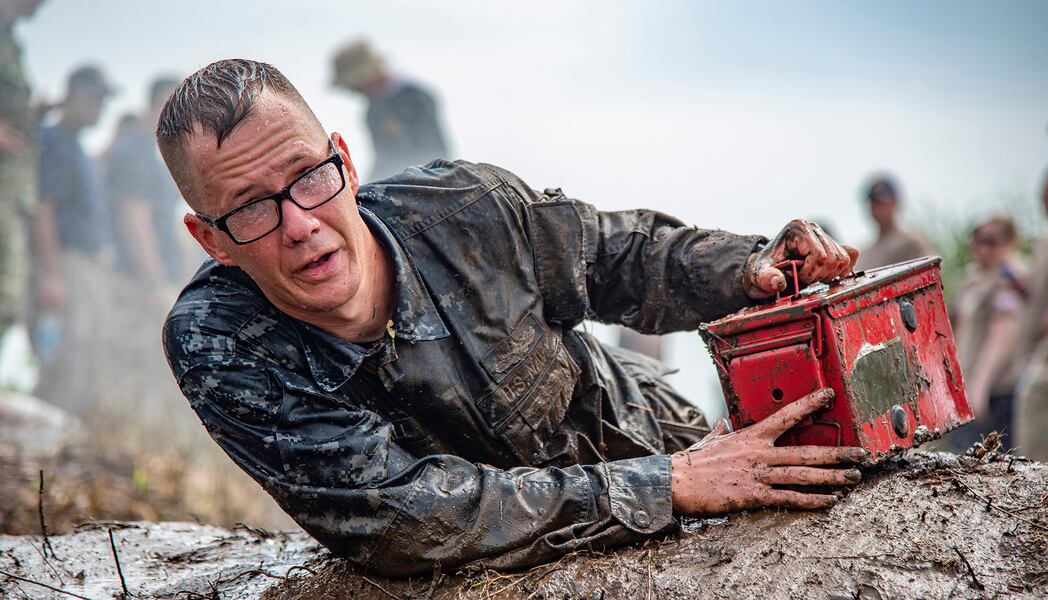More money and more personnel but also new challenges from rising rivals in the western Pacific, Europe and the Persian Gulf.
More changes to your leadership at the Pentagon and in the Navy.
And more innovations that promise to transform the ways the nation’s premier maritime service recruits, trains and retains its sailors.
On Friday, Saturday and Sunday, we gave you 19 through six. Today we greet the final five, too!
Sailors, here comes 2019.
Buckle up!
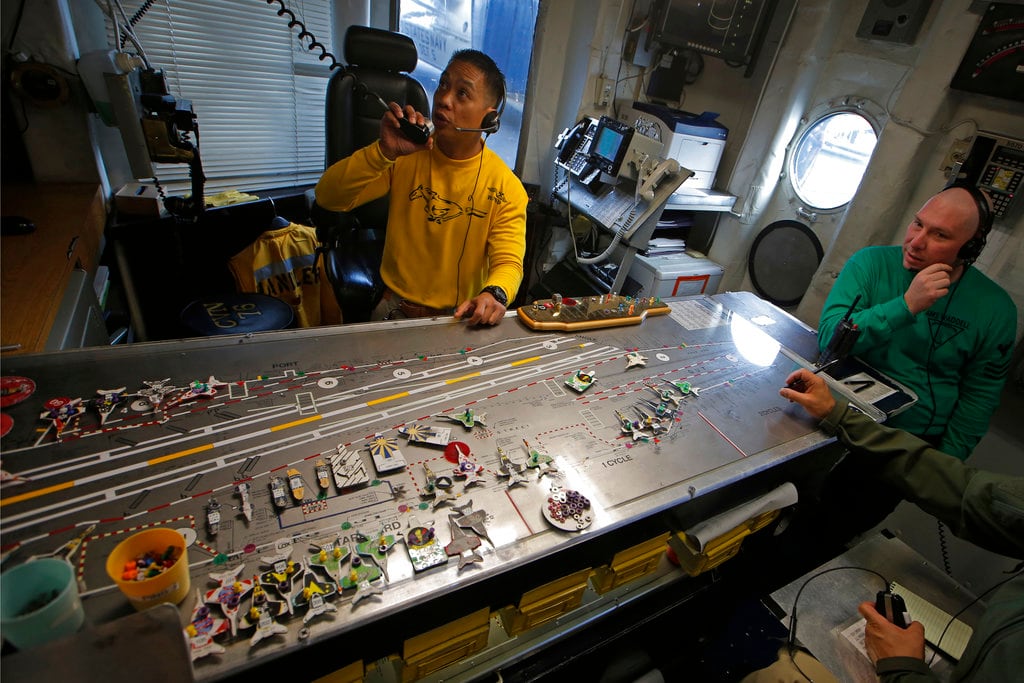
1. The rise of China and Russia
The South China Sea will remain a global flashpoint, with rising tensions sparked by Beijing’s ongoing efforts to fortify islands claimed by Western Pacific neighbors.
And already parring over Moscow’s 2014 invasion and annexation of Ukraine’s Crimean peninsula and economic sanctions by western nations against strongman Vladimir Putin’s regime, relations between the United States and Russia got rockier throughout 2018.
Expect more of all this in 2019.
For China, the U.S. Navy has vowed to continue conducting Freedom of Navigation Operations — or “FONOPS” — to remind the world’s most populous nation that the disputed islands are in international waterways.
On Sept. 30 near the Gaven Reef, a sprawl of rocks that are claimed by Beijing, Taiwan, the Philippines and Vietnam, the Chinese warship Lanzhou closed to within 45 yards of the U.S. Navy’s guided-missile destroyer Decatur, forcing the American vessel to veer away to avoid collision.
“U.S. Navy ships and aircraft operate throughout the Indo-Pacific routinely, including in the South China Sea,” U.S. Pacific Fleet spokesman Cmdr. Nate Chirstensen said in the wake of the incident. “As we have for decades, our forces will continue to fly, sail and operate anywhere international law allows.”
Beijing’s ambassador to the U.S., Cui Tiankai, took to Fox News Sunday to blame the Americans for the confrontation “on China’s doorstep.”
“It’s not Chinese warships that are going to the coast of California, or to the Gulf of Mexico. It’s so close to the Chinese islands and it’s so close to the Chinese coast. So who is on the offensive? Who is on the defensive? This is very clear,” he said.
With Russia, similar confrontations have played out in the air.
On Nov. 5, 2018, a Russian Sukhoi Su-27 Flanker fighter zoomed close to a U.S. Navy EP-3 Aries II reconnaissance plane flying in international airspace over the Black Sea. The Russian pilot banked right, hit the afterburners and forced the Greece-based Navy crew to fly through the turbulent engine wash.
It marked the third time in a 12-month span that Russian jets over the Black Sea intercepted American reconnaissance aircraft in what Pentagon officials said were potentially dangerous encounters.
Then came the Nov. 25 incident in the Kerch Strait that divides the Sea of Azov from the Black Sea. Ukraine attempted to send two gunboats and a tug through the channel but Moscow’s forces fired on the flotilla and detained the crews, vowing to try them in a Russian court.
That triggered Kiev to declare martial law and bar all Russian men of military age from entering the country.
“There is no justification for Russia’s use of military force against Ukrainian ships and naval personnel. We call on Russia to release the Ukrainian sailors and ships it seized, without delay,” read a NATO statement released amid escalating tensions that might not abate in 2019.
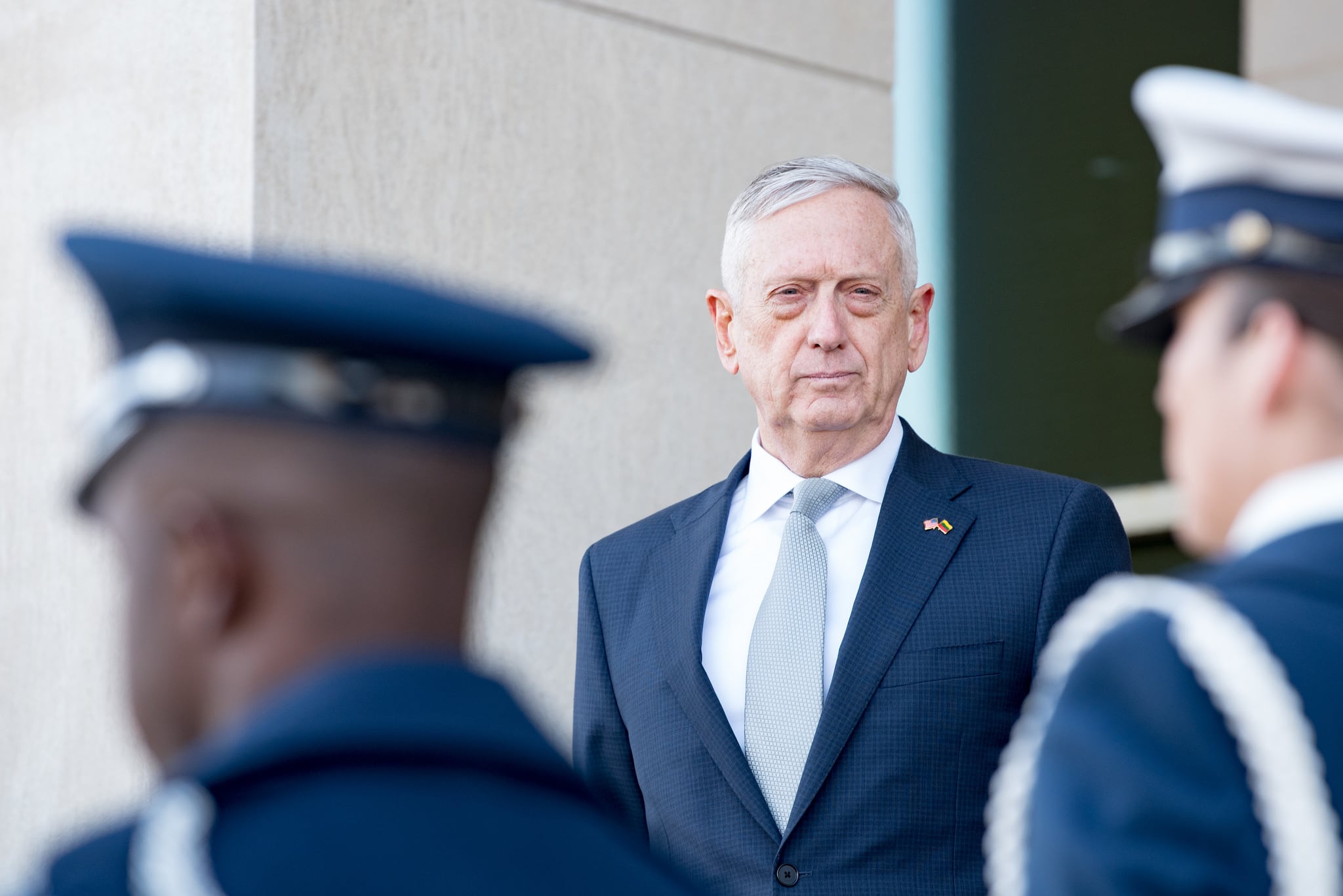
2. A new SecDef
Just days after Defense Secretary Jim Mattis announced he would step down from that post in late February, President Donald J. Trump announced in a Dec. 23 tweet that he’d push the popular Cabinet member out even earlier.
Trump installed Deputy Secretary of Defense Patrick Shanahan as the acting secretary of defense starting Jan. 1. He praised the Pentagon’s second-in-command as having “a long list of accomplishments” and added in his tweet, “He will be great!”
The move cuts short Mattis’ tenure by two months, and added to an acrimonious end of the relationship between the commander in chief and his top military leader.
A resignation letter from Mattis urging the president to find “a secretary of defense whose views are better aligned with yours" likely irked Trump, who unlike the retired Marine four-star general never served in uniform.
Mattis also mildly chastised Trump for the president’s belligerent statements about allies overseas, especially fellow democracies often at odds with strongmen in Russia, China and North Korea.
The end of Mattis' reign over the Pentagon set the stage for potentially contentious confirmation hearings over his successor, who might not be Shanahan, a former top executive at defense contractor Boeing.
It also sparked deliberations by the corral of prized national security hands personally recruited by Mattis to help oversee the armed forces.
If they decide to depart Trump’s Defense Department en masse, there could be increased tension inside the Pentagon and on Capitol Hill, where Mattis enjoyed bipartisan support even amid growing concerns about the president’s handling of foreign policy and national security problems.
A diplomat, Brett McGurk, the U.S. envoy to the global coalition fighting the Islamic State group, already joined Mattis in voting with his feet.
In a protest over President Donald Trump’s abrupt decision to withdraw U.S. troops from Syria, McGurk on Dec. 21 tendered his resignation to Secretary of State Mike Pompeo.
The next day, a tweeting Trump downplayed the development, insisting that he didn’t know the envoy an calling his departure a “nothing event."
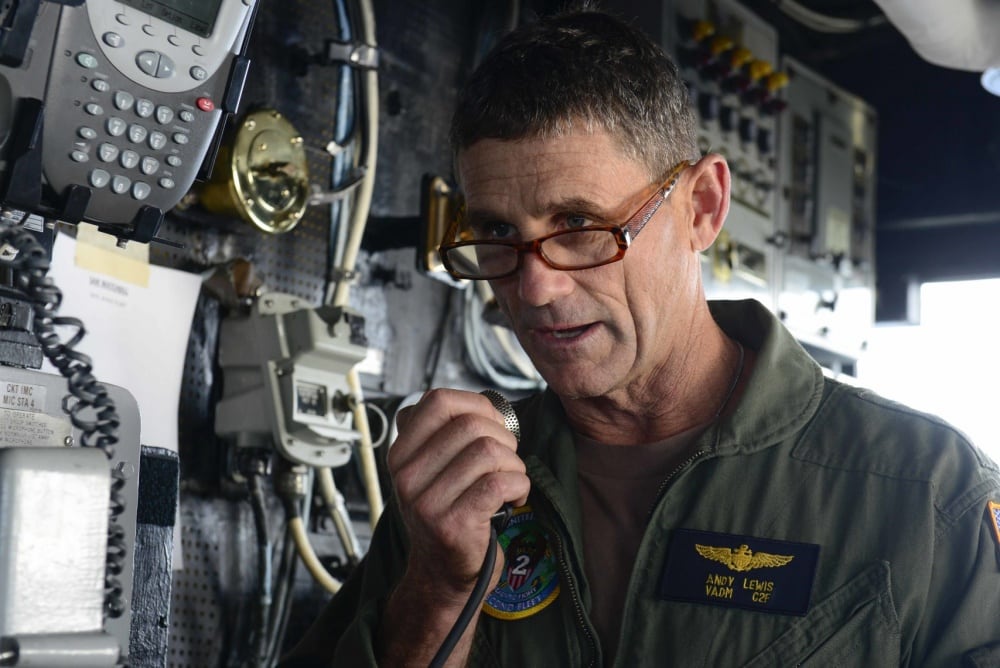
3. Back to the future with 2nd fleet
After nearly two decades as a forgotten backwater, the Atlantic Ocean returned to relevance for the U.S. Navy in 2018.
Levels of Russian submarine activity in the North Atlantic unseen since the end of the Cold War helped prod the Navy to reestablish the 2nd Fleet in Norfolk on Aug. 24. The fleet is expected to reach full operational capability in 2019, according to its commander, Vice Adm. Andrew Lewis.
And his patrols won’t be tracking only Russians. Lewis said that China is “aspirationally in the Arctic,” as well.
“There’s no question the logical sequence of events with China is they will be there militarily, as well.”
Operating in colder northern waters will represent a stark change to traditional U.S. Navy tours, which is why Lewis beefed up his staff with seasoned hands from the U.S. Coast Guard and allies from Canada, Norway and other northern nations.
Lewis said 2nd Fleet will count about 80 staff members by early next year. He plans on keeping his team “lean and agile” as it spearheads what other flag officers have dubbed “the fourth battle of the Atlantic.”
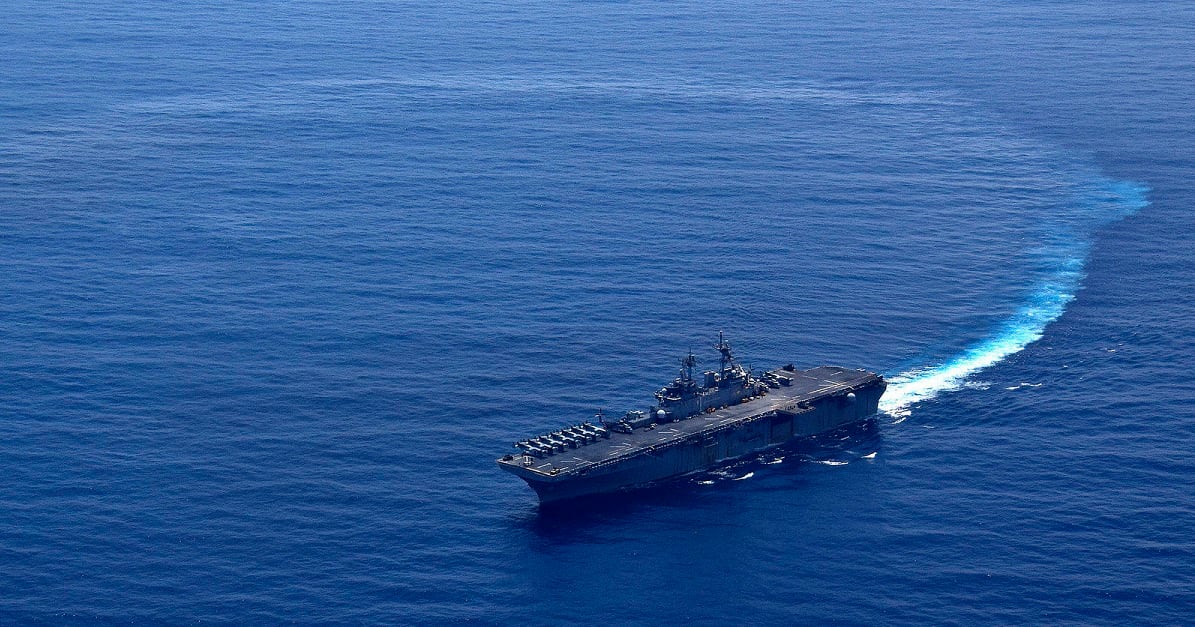
4. Homeport swaps
Three Navy aircraft carriers and three amphibious warships, plus their crews and families, will be prepping to swap homeports or will be on the move in 2019.
The 36-year-old aircraft carrier Carl Vinson will likely leave San Diego in March for a planned incremental availability maintenance stint at the Puget Sound Naval Shipyard, joining the Navy’s oldest operational flattop, the Nimitz, in the state of Washington.
Meanwhile, the carrier Stennis will depart Washington in May to prepare for an overhaul in Virginia, according to Navy Personnel Command.
And the carrier Abraham Lincoln is expected to leave Norfolk for San Diego, too.
Forward-deployed to Japan for just less than a year, the amphibious warship Wasp will leave Sasebo soon and return to Norfolk, replaced by the America, which will bid farewell to San Diego.
It’s part of a three-port swap orchestrated two years ago that also involves the Wasp-class amphib Bonhomme Richard, which also called Sasebo home before May.
That’s when the warship completed its homeport shift to San Diego and began prepping for an extended modernization spell at the nearby General Dynamics National Steel and Shipbuilding yard.
The Pentagon hoped the movements of the three vessels would be completed in 2018 but the Navy Personnel Command’s Decommissioning and Homeport Change webpage marked May 25, 2019 as the effective date for the America’s switch to Sasebo.

5. Remedying readiness woes
The Navy’s Air Boss laid out an ambitious plan in 2018 to get the Navy’s F/A-18 E/F Super Hornet strike fighters back into fighting shape, hiking readiness through maintenance changes, service life extensions and other systemic overhauls buoyed by an increase in defense dollars.
Navy leaders hope the spending spigot remains on and President Trump has telegraphed that he’s willing to push for more Pentagon funding.
After waffling on a potential spending cut, he’s now expected to propose a $750 billion defense budget for Fiscal Year 2020, a 5 percent hike over the previous year’s numbers.
Poised to take control of the House of Representatives when it reconvenes in 2019, several Democrats on Capitol Hill have signaled that a bloated defense budget could stand a diet, a sentiment shared by some fiscal conservatives.
And a spending bill for much of the rest of the federal government this year languishes because of a standoff over Trump’s border wall proposal.
Defense hawks and their critics must reach a budget deal by the fall of 2019 or automatic spending caps enacted in 2011 will return, slashing Pentagon funding to $600 billion per year.
For 2019, however, expect the Navy keep spending to revamp its aging aircraft fleet, with $1.25 billion earmarked for aviation repair depots, $338 million more than lawmakers provided in 2016.
There’s more funding for airframe work, engine maintenance and aircraft components, too.
“We still have a long way to go,” Naval Air Forces spokesman Cmdr. Ron Flanders told Navy Times. “But we’re now at that point where we can say that there’s light at the end of the tunnel.”
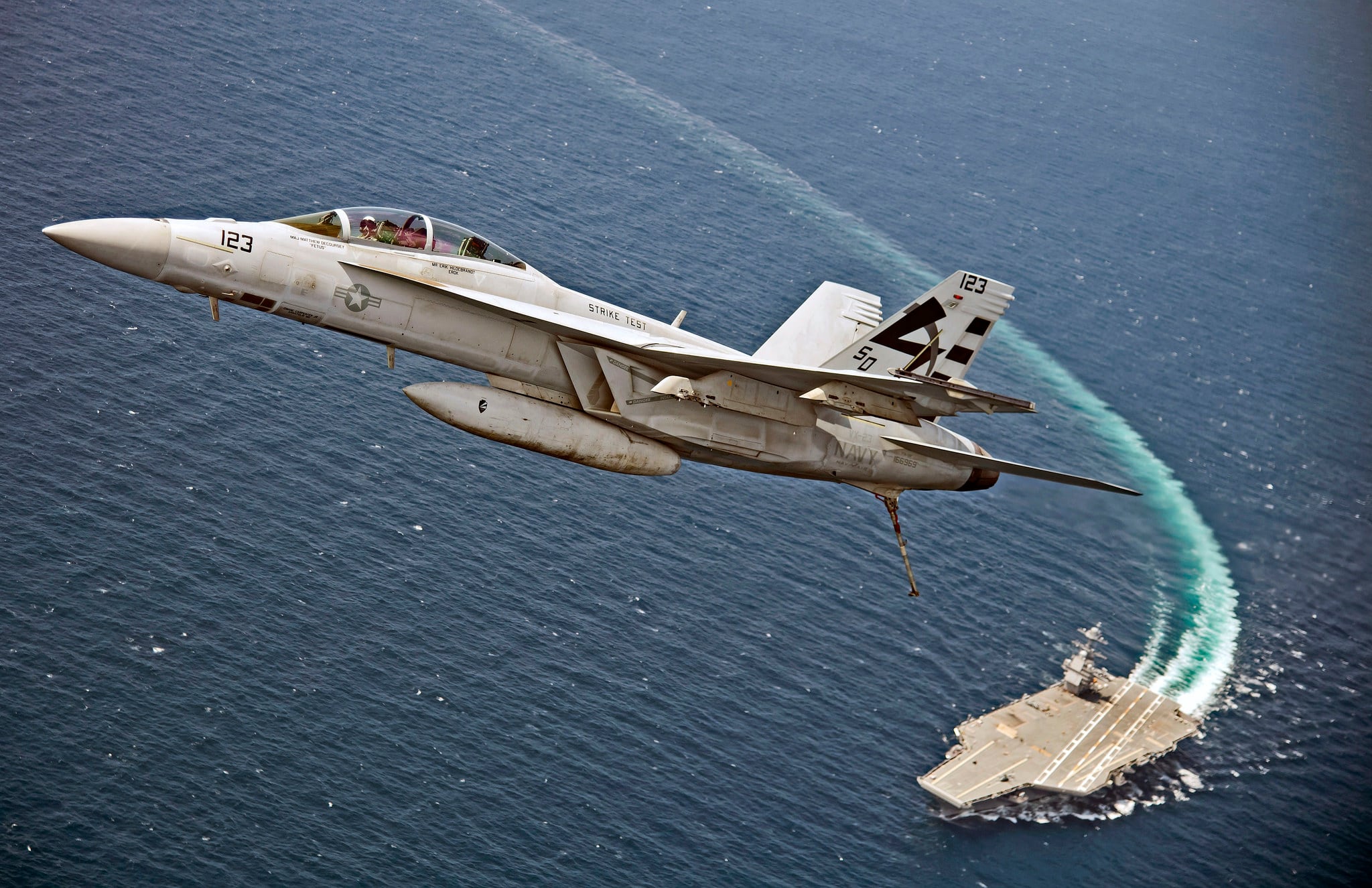
6. More Ford flattops
Dogged by technology glitches and pummeled by critics for its $12.8 billion price tag, the aircraft carrier Gerald R. Ford not only is expected to enjoy a banner year in 2019 but has inspired the Navy to buy more warships like it.
The lead ship in its carrier class, the Ford is scheduled to leave its post-shakedown maintenance session at Huntington Ingalls Newport News Shipyard and head back to sea in late 2019.
Navy officials have told lawmakers that fixes to the Ford’s high-tech electromagnetic catapult system, EMALS, and its Advanced Arresting Gear recovery system will be completed and the warship’s advanced radar installed.
Technicians also are exorcising the demons that haunted the flattop’s weapons elevators.
Ford’s sister carrier, the John F. Kennedy, is expected to be christened by the end of 2019. At the end of November, 84 percent of the flattop’s structure was finished.
Congress capped the Kennedy’s costs at around $11.4 Billion, cheaper than the Ford.
It’s why the Navy is wrapping up a deal with Huntington Ingalls to build two more to replace the aging fleet of Nimitz-class carriers.
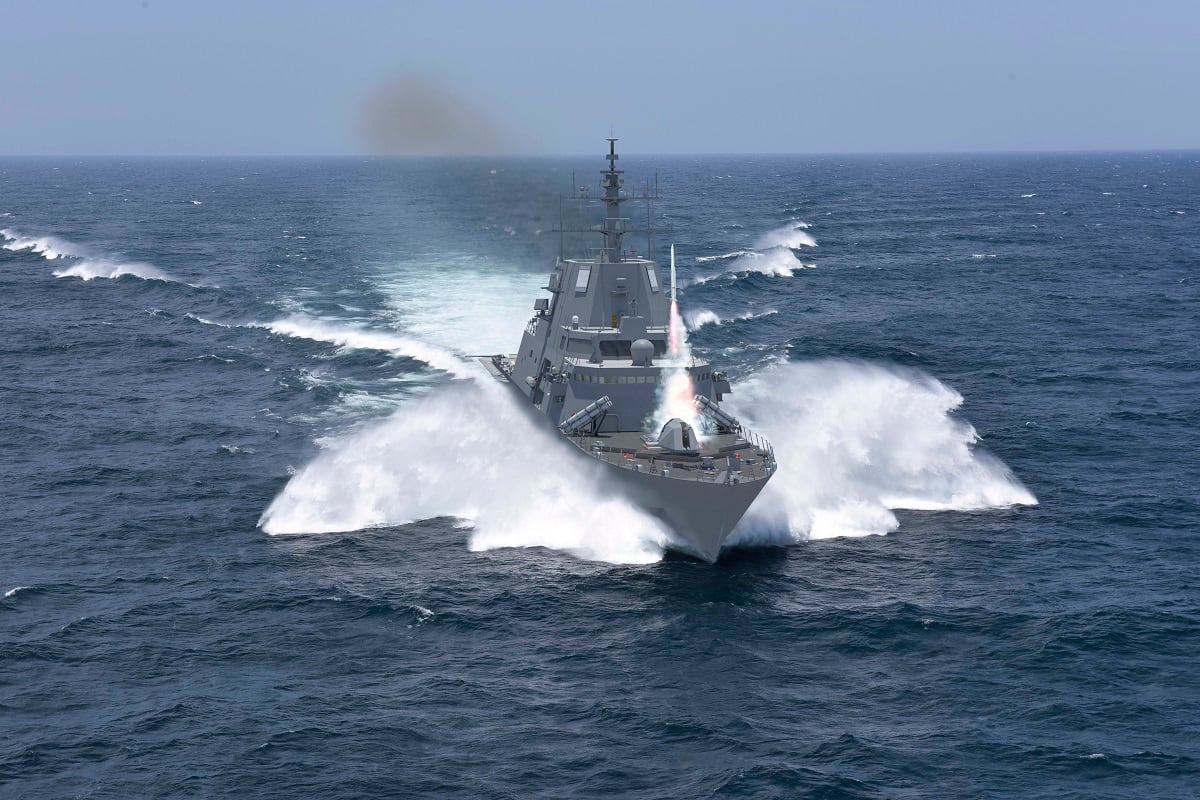
7. Navy mulls frigate choices
The Navy retired the last of its workhorse Oliver Hazard Perry-class frigates in 2015, hoping to replace them with littoral combat ships.
But the LCS program got mired in cost overruns, delays and a fickle Congress that bought more hulls than the Navy wanted, sometimes without the high-tech guts that go into them.
Concerns within the Navy and on Capitol Hill about the future of the LCS have helped to drive the Pentagon to buy up to 20 new frigates, beginning in 2020.
There are five finalists competing to build what’s now called the FFG(X), using designs from existing warships — Austal USA in Alabama; Huntington Ingalls Industries in Mississippi; Lockheed Martin in Baltimore; a joint venture between Italy’s Fincantieri and Wisconsin’s Marinette Marine; and another tying General Dynamics/Bath Iron Works to Spanish shipbuilder Navantia.
Austal is expected to base its design on the Independence-class LCS and Lockheed Martin on its Freedom-class LCS, HII on its Legend-class National Security Cutter, Fincantieri on its FREMM multi-purpose frigate and Bath Iron Works on Navantia’s Álvaro de Bazán-class F100 Frigate.
The Navy hopes to select a winner in 2019, but the Congressional Research Service wants lawmakers and the admirals to first fix some problems with the FFG(X) program.
In a report updated on Oct. 22, CRS urged them to identify the capability gaps and mission needs the new warships are supposed to address and then decide if they’re the right vessels for the jobs.
They also must determine if they’ll end LCS procurement in 2019 and shift to the frigates, or keep buying both vessels.
Should they use a “clean-sheet” design that starts from scratch or lean on “parent” vessels like the LCS that already have been built?
How much space should be built into the frigates to add new technologies and systems as they’re developed, perhaps decades from now?
And how does a new frigate program affect Navy plans to buy more guided-missile destroyers or rehab the aging Ticonderoga-class cruisers?
Those sound like questions that must be answered in 2019.

8. Divided government
Just hours after Democrats won control of the House in November’s midterm elections, House Minority Leader Nancy Pelosi, a Democrat from California, said the victory delivered a clear mandate from voters.
“We have a constitutional responsibility for oversight,” she told reporters. “This doesn’t mean we go looking for a fight. But it means that if we see a need to go forward, we will.”
Issues important to the armed forces and military veterans will be at the center of many of those squabbles. Already, Democrats on the House Armed Services Committee have vowed to probe President Donald Trump’s decision to deploy active-duty troops to the southwestern U.S. border, suspecting that it’s little more than a political stunt.
Democratic critics of the president in the House also pledged to explore the military’s transgender recruiting rules, Trump’s strategy in the Middle East and the need for a new authorization of military force resolution for combat overseas.
Senior party officials have promised to dig into reports of Trump cronies influencing Department of Veterans Affairs policies. They also will ask tough questions about GI Bill payment failures during the fall semester and probe plans to overhaul the agency’s community care programs.
Democrats will have broader subpoena power than they enjoyed in 2018 and will use it to investigate Trump’s past tax filings and business connections to Russia.
The new Congress convenes on Jan. 3.
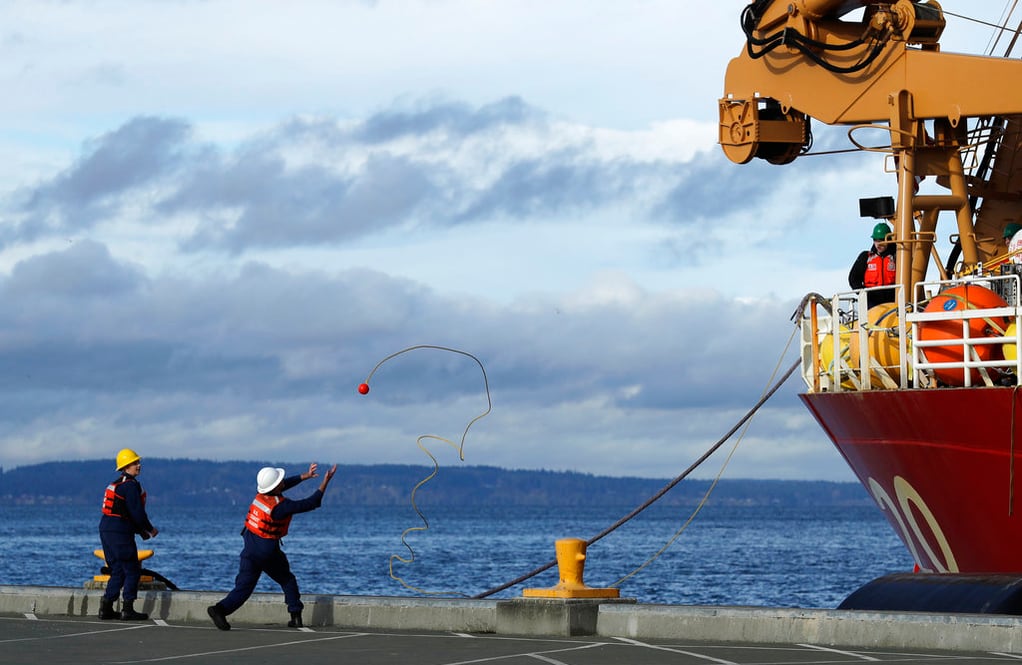
9. Coast Guard needs icebreakers
The Navy draws its funding from the Department of Defense but its smaller sister service, the Coast Guard, relies mostly on the Department of Homeland Security. Lawmakers already wrapped up a 2019 spending package for the Pentagon but in December they were still working on the DHS budget.
Congress and the White House have dangled a $750 million icebreaker project to build what’s now called the Polar Security Cutter.
Coast Guard Commandant Adm. Karl Schultz wants to start building six breakers — three heavy, three medium. His service is down to one of each now, the Healy and the heavy Polar Star, which was commissioned in 1976.
The Navy doesn’t have icebreakers and with calls to increase America’s presence in the Arctic region the Coast Guard is raising a hand to help.
And the Coasties can help sooner if they can start building an icebreaker in 2019 and rebuilding the rest of their aging cutter fleet.
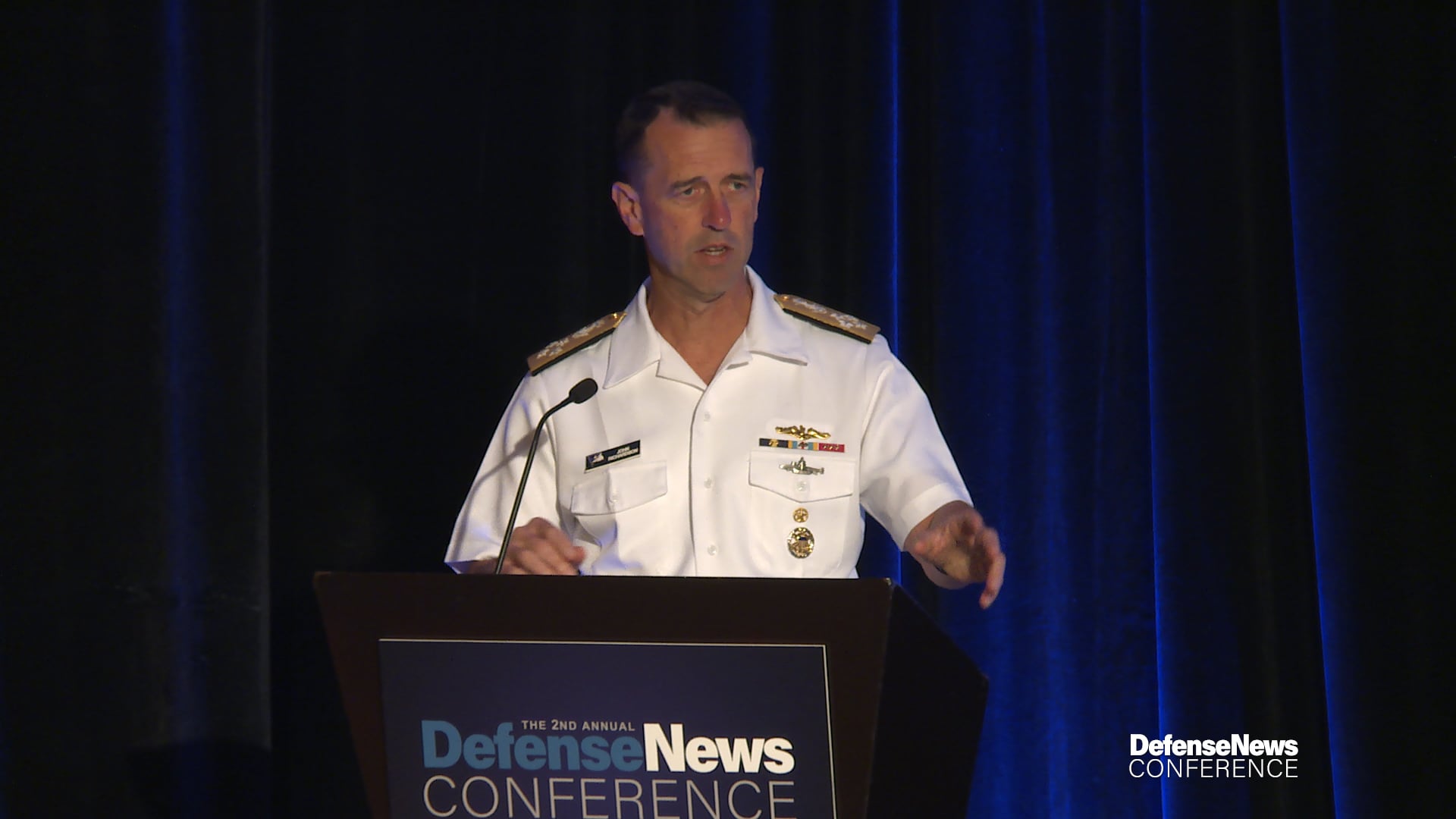
10. CNO about to go?
Next September will be the four-year mark for Adm. John Richardson’s stint as Chief of Naval Operations.
And while officials have been mum on the nominee to become the Navy’s next top officer, the norm has been a four-year tour.
The only four-star to last longer than four in the 21st century was Adm. Vernon E. Clark, who held the post from July 2000 to July 2005, becoming the longest-serving CNO since Adm. Arleigh Burke helmed the Navy between 1955 and 1961.
That’s led to growing speculation about Navy Secretary Richard Spencer’s pick as Richardson’s replacement in 2019.
Richardson and his predecessor, Adm. Jonathan Greenert, were career submariners, as is Adm. James Caldwell, currently the head of Naval Reactors, and Adm. James Foggo III, who has led naval forces in Europe and Africa, plus NATO’s Joint Force Command Naples, since 2017.
Four-star aviators include Adm. Bill Moran, who has served as Vice Chief of Naval Operations since 2016, and Adm. John Aquilino.
But Aquilino became the 36th commander of the U.S. Pacific Fleet in May and was soon joined in Hawaii by Adm. Phil Davidson, a surface warfare officer, at U.S. Indo-Pacific Command.
Davidson was replaced at U.S. Fleet Forces Command by fellow SWO Adm. Christopher Grady.
The most recent four-star switch occurred on Nov. 26, when Adm. Craig Faller relieved Adm. Kurt W. Tidd as commander of U.S. Southern Command.
Tidd holds the titles of both “Old salt” and “Old Goat” — the oldest serving SWO and the longest-serving graduate of the U.S. Naval Academy.
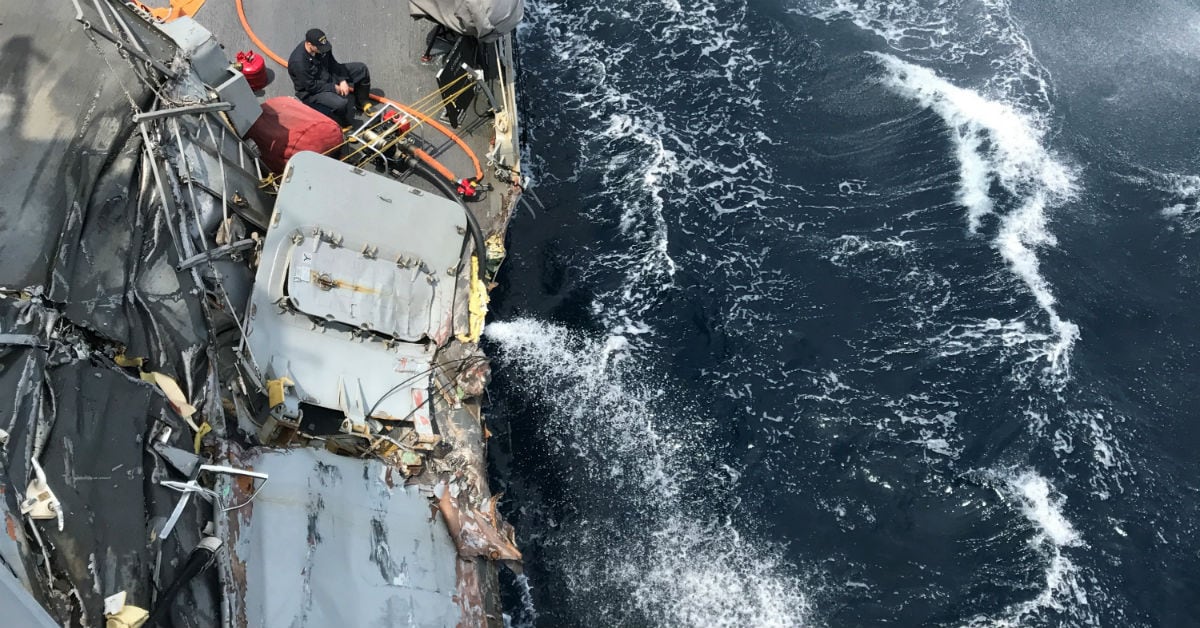
11. Fitz officers fight back
The Navy officer who commanded the warship Fitzgerald when it suffered a fatal collision in 2017 will finally have his day in court next year, and so will one of his lieutenants.
Cmdr. Bryce Benson faces dereliction of duty and hazarding a vessel charges in connection to the June 17, 2017, collision with a merchant vessel off the coast of Japan that killed seven sailors.
The Navy dropped a negligent homicide charge against him.
The ongoing legal maneuvers continue to shine spotlights not only on the Navy’s efforts to shore up years of shoddy maintenance and manning during an era of high operational tempo in the 7th Fleet but also on how senior leaders handle court-martial cases.
Attorneys for Benson and Lt. Natalie Combs have moved to get the cases tossed out of court, arguing that public statements by CNO Richardson and several flag officers, combined with other alleged forms of unlawful command influence, spoiled their chances to get fair trials.
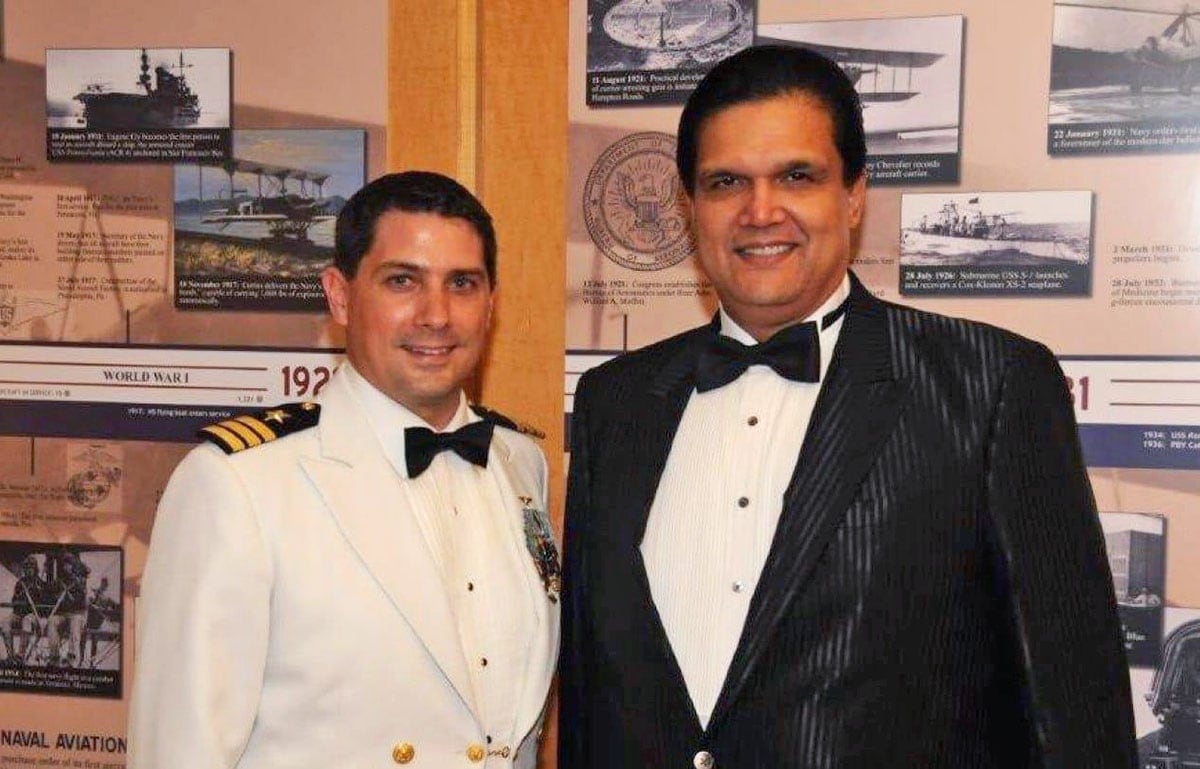
12. Fat Leonard haunts the Navy
This past year saw several current and retired Navy leaders disciplined, tried and sentenced for their dirty dealings with “Fat Leonard” Glenn Francis, the portly shipping magnate who plied scores of senior officers and their top enlisted sailors with prostitutes, booze, cash and other perks to land ship servicing contracts in the Western Pacific.
At least 21 active-duty and retired defendants have been charged by the U.S. Justice Department in connection with the Fat Leonard scandal and federal prosecutors passed hundreds of lower-level cases to the Navy for military adjudication.
As of mid-December, 11 named defendants still await trials for public corruption.
Several are expected to start in 2019, including those for Cmdr. Stephen F. Shedd, the former 7th Fleet planning officer, and retired officers Rear Adm. Bruce Loveless, Capt. David “Too Tall” Lausman and Cmdr. Donald “Bubbles” Hornbeck.
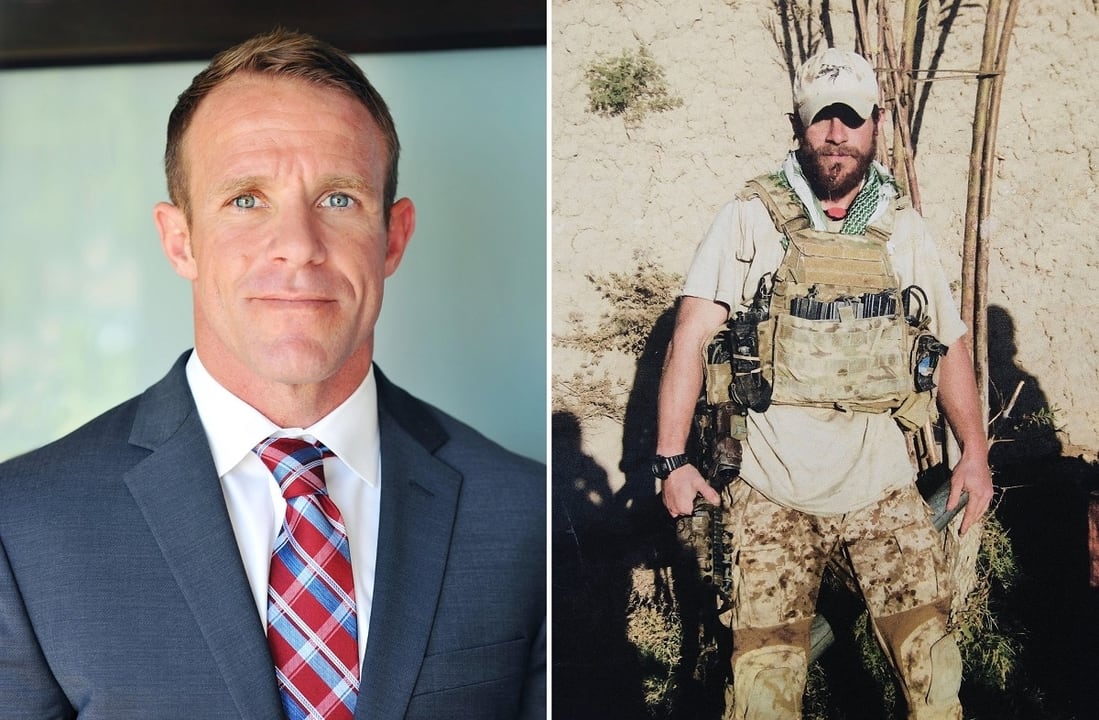
13. Special warriors under fire
While trials targeting the Fitz officers and Fat Leonard defendants snatched headlines nationwide, quieter court-martial proceedings have played out for the Navy warriors who ply their trade in the shadowy world of counter-terrorism operations.
In California, six SEALs are battling war crime charges tied to their service overseas in either Afghanistan or Iraq.
In Virginia, two SEALs face murder charges for their alleged roles in the slaying of Army Special Forces Staff Sgt. Logan Melgar, who was strangled to death on June 4, 2017 in Bamako, Mali.
They’ll be joined in the Norfolk docket by Navy Lt. Craig Becker, an explosive ordnance disposal expert who authorities believe drugged and tossed his wife, Johanna Hanna Elizabeth Hove-Becker, from their Belgian apartment’s window in late 2015, killing her.
All have pleaded not guilty but the strongest public support has gone to a pair of SEALs in San Diego, Chief Special Warfare Operator Edward “Eddie” Gallagher and his commanding officer, Lt. Jacob “Jake” Portier.
Prosecutors allege Gallagher stabbed to death a young, wounded Islamic State prisoner of war near Mosul in 2017. He faces at least 14 criminal counts, including murder, aggravated assault, obstructing justice and drug charges tied to alleged pain reliever and anabolic steroid abuse.
Portier is accused of failing to report rumors of his chief’s misconduct to superiors in their chain of command.
Both have proclaimed their innocence and predict they’ll be exonerated. Supporters also point to Chief Special Warfare Operator Keith Barry, who won a landmark decision on Sept. 5 from the military’s highest court after justices ruled senior Navy leaders committed unlawful command influence that tainted his case.
But questions continue to mount about a culture of corruption and callousness inside the secretive teams of SEALs and the sailors who are attached to them.
Nine very public court-martial trials might answer them.

14. More money in your pockets
Sailors in 2018 saw lawmakers approve their biggest pay raise in a decade. And the next boost could be even bigger.
Continuing a trend in recent years, the raise for 2020 is slated to rise again, thanks to the improving economy and expected increase in civilian sector wages.
Based on the current federal formula, troops should see a 3.1 percent pay raise in January 2020, up 0.5 percent from the 2.6 percent raise this January.
If that holds, it would mark the fifth year that troops saw a bigger pay raise than the previous year.
But getting the money depends on Congress and the White House.
The is an easy target for savings because of the large effects even small changes to salaries can make.
Dropping the pay raise by 0.5 percent — which leaves troops with a large paycheck but not necessarily one that keeps up with civilian wages — can save up to $3 billion over five years for the Defense Department.
But military advocates have long argued that such moves undermine promises to provide for troops and their families.
The White House’s formal Defense Department appropriations request is scheduled to be unveiled in February.
After that, expect months of wrangling over the totals and details.
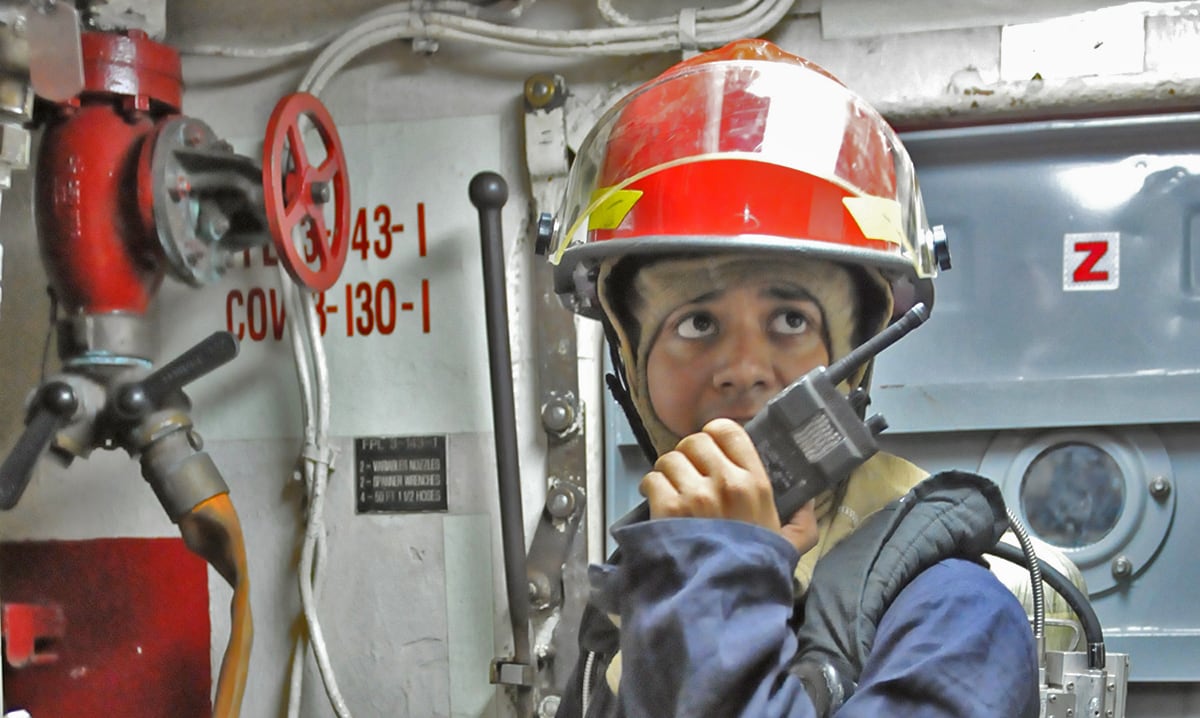
15. More chances to advance
The Navy is expected to grow in 2019, increasing manning to levels unseen in the sea service for over a decade, with advancement opportunities inching up alongside the size of the force.
As of December 5, the service had 329,867 people on active-duty, the highest number in uniform total since late 2010.
By next December, the Navy is slated to have 335,400 officers and sailors, the highest total since late 2007.
Navy personnel officials say the continued growth in end strength should spark more chances for you to get ahead, a trend spotted in 2018.
Active duty petty officers enjoyed a 23.5 percent chance of moving up in the fall cycle, slightly higher than in the spring.
Advancements to chief petty officer saw a steady rise over the past three years, cresting at a 25 percent selection rate in 2018.
Since 1997, the selection rate to senior chief petty officer held stead at around 11 percent, until 2018. Then it shot up to 14 percent.
There also will be more Meritorious Advancement Program picks. Since officials revamped the program in 2015, quotas have increased by 4,774 total slots. That’s a 213 percent increase over the initial 2,238 quotas allowed.
The Navy’s top personnel officer, Vice Adm. Bob Burke, wants one out of every four petty officers to get ahead through merit-based advancements, a trend likely to continue in 2019.
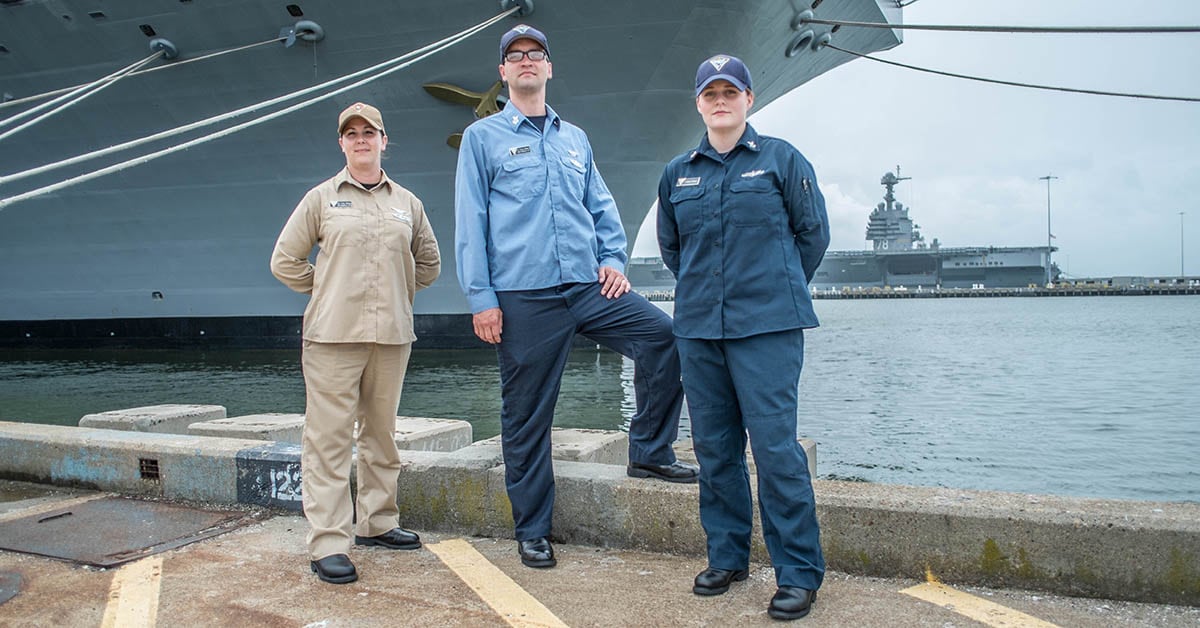
16. An end to the uniform madness
Nearly two decades of uniform changes should end in October of 2019 when the “Blueberry” Navy Working Uniform will no longer be authorized for wear.
That’s also the date when all sailors will be required to own and maintain two sets of the green Type III uniform.
The transition officially started Oct. 1, 2017 when recruits were issued new uniforms at boot camp in Great Lakes. By early 2018, the Navy Exchange announced it was scrapping a phased two-year roll out for the uniform and made it available in every shop.
All sailors will see the second year of a two-year plus-up in their annual clothing replacement allowances to pay for the uniforms.
Still undecided is what sailors will wear at sea. The Navy began issuing the new “Improved Fire Retardant Variant” coveralls this year. Considered command-issued “organizational clothing,” Big Navy foots the bill.
But officials say that 84 percent of sailors in fleet focus groups demanded a two-piece version to wear. Initial testing of the prototype ended in September and drew poor reviews, with many sailors advocating for a fire retardant NWU Type III style of uniform.
Navy leaders will make up their minds in 2019.
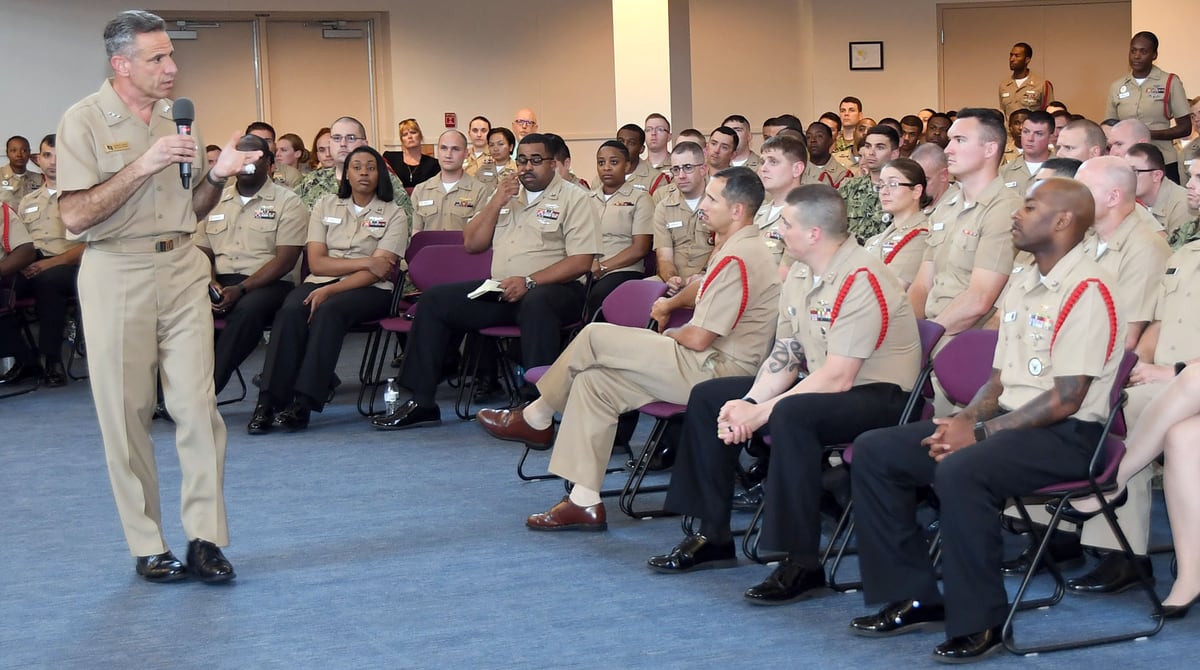
17. LinkedIn, for the Navy
The Navy is expected to debut a new “Detailing Marketplace” system in mid-2019, with sailors in some ratings getting the chance to negotiate orders and assignment perks on their smartphones and desktop devices.
Describing it as “LinkedIn for the Navy,” Vice Adm. Bob Burke, the Navy’s top personnel officer told Navy Times that it’s all part of an ongoing effort to string multiple personnel databases together to better guide sailors through their careers.
“It will know who the sailor is and have the ability to use that information to help them better manage their careers,” Burke said.
The Navy spent the latter half of 2018 testing the new technology on both desktop and mobile devices for the aerographer’s mate rating, what Burke called a “war game” to try out the new technology.
Burke said that the Navy has been using “real data and sailors will be able to test functions and negotiate for money, advance to vacancy, geographic stability, educational opportunities — all those things — just as if they’re doing it for real.”
Officials are gathering data from the ongoing tests to refine the system for 2019.
“Major muscle movement parts will be in place April or May 2019 to support this,” Burke said. “Then we’ll commence a rating-by-rating rollout because we won’t be able to do it all at once as that would just be too difficult.”

18. A better tape test
The Pentagon expects to decide on changes to the dreaded tape test by next summer, potentially overhauling one of the main ways it evaluates sailors’ fitness and body composition.
For more than a year, the Defense Department has been working with the services on ways to better calculate the body fat composition of service members, which for a generation has mainly involved a tape test that relies on several key measurements of body size and height-weight proportions.
The tape test has been widely criticized as an inaccurate method that unfairly penalizes people with certain body types.
Failure to meet the services’ body composition standards can result in involuntary separation.
“The department is actively working closely with the services on this issue and we expect to have results we can discuss in late spring or early summer,” said Pentagon spokeswoman Lt. Col. Carla Gleason.
Other options could include using MRIs, water displacement or CT scans, methods that are more accurate but also more costly and gobble up more time.
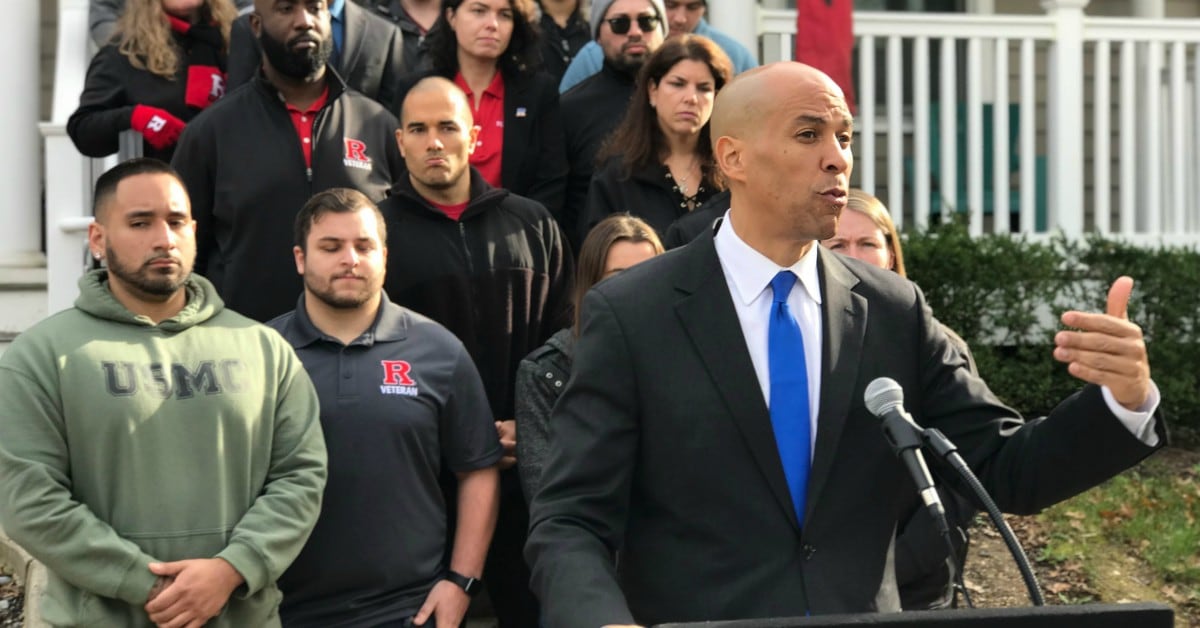
19. GI Bill changes
Earlier this year, the Pentagon changed the rules for troops who want to transfer their Post-9/11 GI Bill benefits to their dependents.
Most notably, the new policy will end transfers for service members who have been in uniform longer than 16 years, starting in July 2019.
It also immediately put an end to previous exceptions that have allowed certain service members with more than 10 years in uniform to transfer the benefit without committing to serve four more years, including those who were unable to continue serving because of mandatory retirement or high-year tenure.
DoD officials have said the changes are “to more closely align the transferability benefit with its purpose as a recruiting and retention incentive.”
Officials said the policy change will impact about 9 percent of the total force.
The changes have been hotly contested by lawmakers and veteran advocates, and, after pushback, Defense Secretary Jim Mattis announced in September that none of the changes would apply to wounded warriors.
Active-duty sailors who have earned a Purple Heart are now allowed to transfer their Post-9/11 GI Bill benefits to their family members whenever they want.
More recently, Sen. Cory Booker, a New Jersey Democrat, has introduced legislation to scrap DoD’s changes altogether and open GI Bill transfer to veterans who did not have dependents while on active duty.
Meanwhile, long-serving sailors who want to transfer their GI Bill benefits to a spouse or child should plan on doing so before the July deadline kicks in.
Geoff is the managing editor of Military Times, but he still loves writing stories. He covered Iraq and Afghanistan extensively and was a reporter at the Chicago Tribune. He welcomes any and all kinds of tips at geoffz@militarytimes.com.
Mark D. Faram is a former reporter for Navy Times. He was a senior writer covering personnel, cultural and historical issues. A nine-year active duty Navy veteran, Faram served from 1978 to 1987 as a Navy Diver and photographer.
Military Times contributor and former reporter Natalie Gross hosts the Spouse Angle podcast. She grew up in a military family and has a master's degree in journalism from Georgetown University.
Tara Copp is a Pentagon correspondent for the Associated Press. She was previously Pentagon bureau chief for Sightline Media Group.
Leo covers Congress, Veterans Affairs and the White House for Military Times. He has covered Washington, D.C. since 2004, focusing on military personnel and veterans policies. His work has earned numerous honors, including a 2009 Polk award, a 2010 National Headliner Award, the IAVA Leadership in Journalism award and the VFW News Media award.
Prine came to Navy Times after stints at the San Diego Union-Tribune and Pittsburgh Tribune-Review. He served in the Marine Corps and the Pennsylvania Army National Guard. His awards include the Joseph Galloway Award for Distinguished Reporting on the military, a first prize from Investigative Reporters & Editors and the Combat Infantryman Badge.
